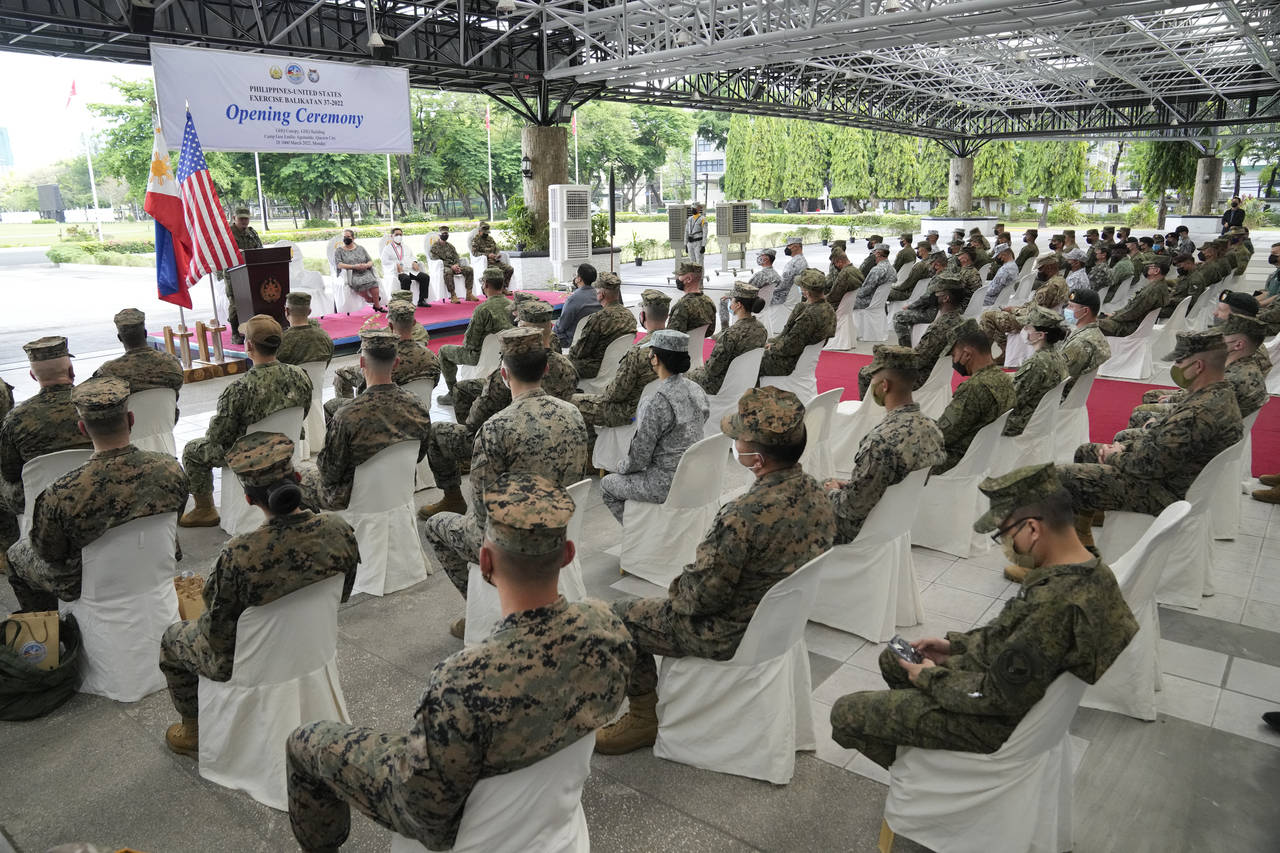
Thousands of US and Filipino forces began one of their largest combat exercises in years on Monday. It will include live-fire simulations, aircraft assaults, urban warfare, and also beach landings in the northern Philippines near the Taiwanese border.
The annual exercises are known as Balikatan — Tagalog for shoulder-to-shoulder. They will take place from March 8 to April 8 with nearly US and Filipino 9,000 forces. It also includes 5,100 American military personnel. It is to strengthen the long-time treaty allies’ “capabilities and readiness for real-world challenges.”
Given the war games’ proximity to Taiwan, which China claims as its territory, China is likely to object. But organizers say the exercises aren’t targeting any one country.
“The US military and Armed Forces of the Philippines will train together to expand and advance shared tactics, techniques, and procedures that strengthen our response capabilities and readiness for real-world challenges,” said Maj. Gen. Jay Bargeron, the US 3rd Marine division’s commanding general. “Our alliance remains a key source of strength and stability in the Indo-Pacific region.”
The Balikatan exercises began in 1991. They are based on the 1951 Mutual Defense Treaty. The treaty pledges the US and the Philippines to come to each other’s help in the event of an attack. As a deterrent to conflict, the US and Filipino forces want to be powerful and well-prepared for any security situation. Col. Ramon Zagala, a spokesman for the Philippine military, likewise stated, “It’s for mutual defense, never for offense.”
According to Zagala, the treaty alliance “declares formally our sense of unity and determination to mutually defend against external armed attack, so that no potential aggressor could be under the impression that either of them stands alone.”
Pro-Cagayan
However, the governor of northern Cagayan province, where amphibious landings with limited live-fire maneuvers were going to take place this week in the coastal town of Claveria, has objected to any joint exercise involving gunfire, fearing that it might provoke China.
“The military consulted and asked me, but I said I cannot allow any live-fire exercise. Any exercise is OK, but live-fire,” Cagayan Governor Manuel Mamba told The AP by telephone. “We have to engage China, but not in a war, because I know Taiwan is a powder keg.”
China, the United States, and Taiwan have all expressed interest in investing in Cagayan. It has burgeoning agricultural and related businesses. “I’m not pro-China, I’m pro-Cagayan,” Mamba stated.
The beach landing exercises will take place at Claveria without any live-fire training, according to a Philippine military official. Instead, live-fire training will take place at Crow Valley, an aircraft gunnery range in Tarlac province, south of Cagayan.
The combat drills are taking place in the northern Philippines amid rising tensions between Taiwan and China. However, Zagala claims that most of the military maneuvers were scheduled a year ago and did not take into account the ongoing tensions in the Taiwan Strait.
China has been performing threatening drills and flying military jets near Taiwan’s airspace. It deems a warning to Taiwan independence activists and their foreign backers, particularly on February 24, when Russia began its invasion of Ukraine.
China, Taiwan, USA
Chinese officials, led by President Xi Jinping, have stated their commitment to bringing Taiwan, which they claim as Chinese territory, under Beijing’s reign through peaceful methods. The United States has continuously stated its support for Taiwan’s ability to defend itself, and military action by China against the island in the near to medium term is usually viewed as a remote possibility.
Most combat exercises and humanitarian projects will take place in the country’s north. Some maneuvers will take place in the western island province of Palawan. Air defense exercise involving US and Philippine fighter aircraft around the western side of Luzon, according to Maj. Kurt Stahl of the third US Marine division.
That region is bordered by the disputed South China Sea, where China’s increasingly assertive actions, such as the construction of missile-protected island bases to bolster its vast territorial claims. They have sparked protests and condemnation from rival claimants such as the Philippines and Vietnam, and the US and its Western and Asian allies.
